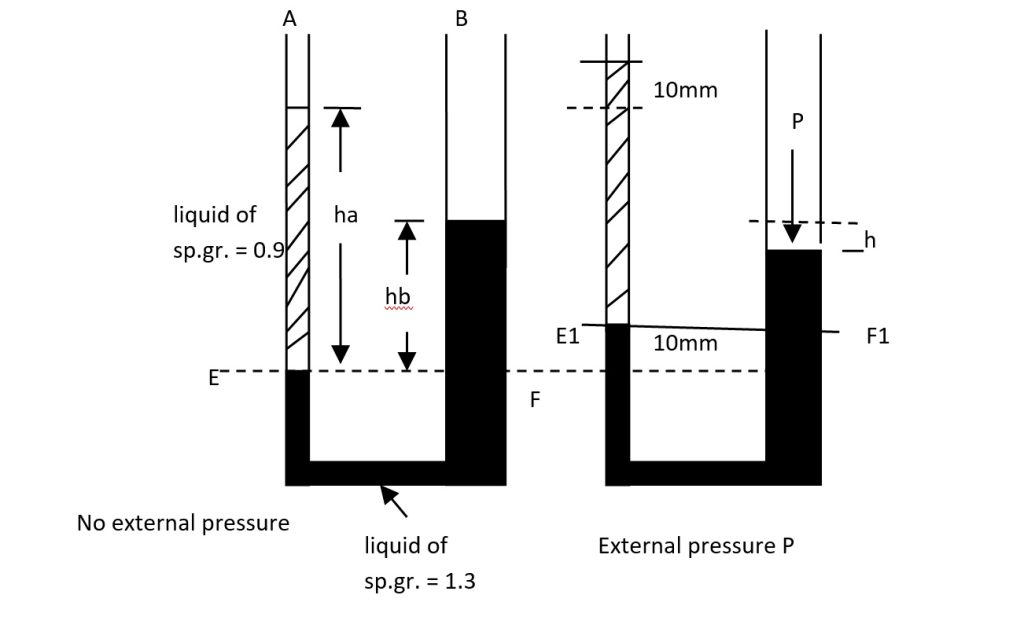
Problem Statement
The diameters of the limbs A and B of a U-tube are 5 mm and 20 mm, respectively. The limb A contains a liquid with a specific gravity of 0.9, while the limb B contains a liquid with a specific gravity of 1.3. If an external pressure is applied on the surface of the liquid in limb B to cause a 10 mm rise in the liquid level in limb A, determine the required pressure.
- Specific gravity of liquid in A (γA) = 0.9
- Specific gravity of liquid in B (γB) = 1.3
- Diameter of limb A = 5 mm
- Diameter of limb B = 20 mm
Solution
1. Initial Pressure Balance
Without external pressure, the equilibrium equation is:
2. Effect of External Pressure
When external pressure is applied to limb B, the rise in level in limb A is 10 mm, and the fall in limb B is \(h\). Using volume conservation:
3. Pressure Balance with External Pressure
At the new equilibrium, the pressure equation becomes:
Explanation
- Initial Pressure Balance: The liquids in the U-tube initially balance based on their specific weights and heights.
- Volume Conservation: The rise in one limb equals the fall in the other limb, adjusted for their cross-sectional areas.
- External Pressure: The applied pressure modifies the equilibrium, resulting in a measurable rise in limb A and fall in limb B.
- Final Calculation: By combining the principles of hydrostatics and volume conservation, the required external pressure is determined.
Physical Meaning
This problem illustrates the interplay between pressure, specific weights, and volume conservation in a U-tube. Such calculations are crucial in understanding fluid dynamics in interconnected systems and designing pressure-based measurement devices like manometers.



